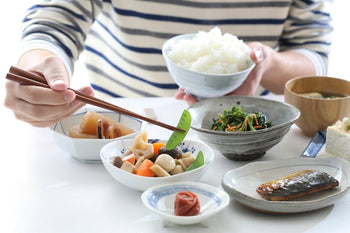

Imagine strolling through a park in Japan during sakura season, the air filled with the delicate fragrance of cherry blossoms. This enchanting experience is central to Japanese culture, and it extends to the unique tradition of cherry blossom tea, or sakuracha. In this post, we’ll explore the captivating world of cherry blossom tea, from its historical roots to its modern-day appeal.
The Charm of Cherry Blossoms in Japanese Culture
Cherry blossoms, or sakura, are more than just pretty flowers in Japan; they symbolize the beauty and transience of life. Each year, people gather for hanami, picnicking under blooming trees and celebrating the arrival of spring. During these gatherings, sakuracha is often served, connecting people with the season's fleeting beauty.
The allure of cherry blossoms is deeply woven into Japanese art and literature. Poems and paintings frequently depict these delicate blooms, capturing their ephemeral nature. This cultural significance makes sakuracha a beloved beverage, as it embodies the essence of Japanese aesthetics.
Historical Significance of Cherry Blossoms and Their Traditional Uses
Cherry blossoms have been cherished in Japan for centuries. Historically, they were associated with the samurai class, symbolizing the brevity of life. Over time, they became a part of the broader cultural fabric, celebrated by people of all walks of life.
In traditional Japanese medicine, cherry blossoms were used for their soothing properties. They were believed to promote relaxation and aid digestion, making them a staple in wellbeing practices.
Beyond tea, cherry blossoms find their way into culinary creations. From sakura mochi—sweet rice cakes wrapped in pickled cherry leaves—to sakura-infused rice, their subtle flavor enhances a variety of dishes, offering a taste of springtime.
The Art of Crafting Cherry Blossom Tea
Making cherry blossom tea is an art form that requires precision and care. The process begins with harvesting the blossoms in mid to late spring, just before they fully bloom. This timing ensures that the flowers retain their vibrant color and delicate aroma.
Once harvested, the blossoms undergo a meticulous pickling process. They're salted to draw out moisture and preserve their flavor, then soaked in plum vinegar to enhance their fragrance. This unique combination of ingredients sets sakuracha apart from other teas.
The final step involves drying the blossoms under the sun, which concentrates their natural compounds without damaging their delicate structure. When brewed, the blossoms unfurl beautifully, releasing their gentle aroma into the tea.
Health Benefits and Cultural Associations of Cherry Blossom Tea
Cherry blossom tea offers more than just aesthetic pleasure. It's also packed with antioxidants, which help combat oxidative stress and support overall health. The calming properties of sakuracha make it a popular choice for relaxation, promoting mental clarity and reducing anxiety.
In Japanese culture, sakuracha is often associated with celebrations and new beginnings. It's common to serve the tea at weddings and other joyous occasions, symbolizing hope and renewal.
The cultural connection to sakura means that drinking sakuracha can evoke feelings of nostalgia and tranquility. Its light, floral taste provides a moment of peace in a busy day, making it a beloved ritual for many in Japan.
Where to Find and How to Enjoy Cherry Blossom Tea
For those in Japan, sakuracha can be found in supermarkets and specialty shops. Daiso and other large retailers often carry "salted cherry blossoms," ideal for making authentic sakuracha at home. Tea House Yamanenen in Tokyo is renowned for its premium cherry blossom tea, offering a selection of high-quality, locally-sourced blossoms.
If you're outside Japan, fear not! Many online stores ship sakuracha worldwide, allowing you to enjoy this unique tea wherever you are. Pair it with traditional Japanese sweets like wagashi or sakura mochi for a complete experience.
To brew sakuracha, gently rinse the blossoms to remove excess salt. Place them in a cup and pour hot water over until they unfurl. Enjoy the aroma and savor each sip, letting the taste transport you to a serene Japanese garden.
Personal Stories and Experiences with Cherry Blossom Tea
Enthusiasts around the world have shared their love for sakuracha, each with a unique story. For some, it’s a cherished memory from a trip to Japan, while others discovered it through a gift from a friend.
One avid fan recalls her first encounter with sakuracha during a hanami picnic in Kyoto. The tea's subtle flavor perfectly complemented the surrounding cherry blossoms, creating an unforgettable moment of harmony with nature.
Another tea lover found solace in sakuracha during a stressful period, using it as a tool for mindfulness and relaxation. The simple act of brewing and sipping the tea provided a daily ritual to unwind and reflect.
Conclusion
Cherry blossom tea is more than a beverage; it's a cultural treasure that encapsulates the beauty and traditions of Japan. From its historical roots to its modern-day appeal, sakuracha continues to enchant people worldwide. Whether you're a long-time fan or new to this delicate tea, it offers a unique taste of Japanese culture and a moment of peace in a hectic world.
For those eager to explore further, consider joining a tea appreciation group or attending a hanami event. Sharing sakuracha with others can deepen your connection to this timeless tradition and create lasting memories. Whether enjoyed alone or with friends, cherry blossom tea invites you to pause, reflect, and appreciate the fleeting beauty of life.



